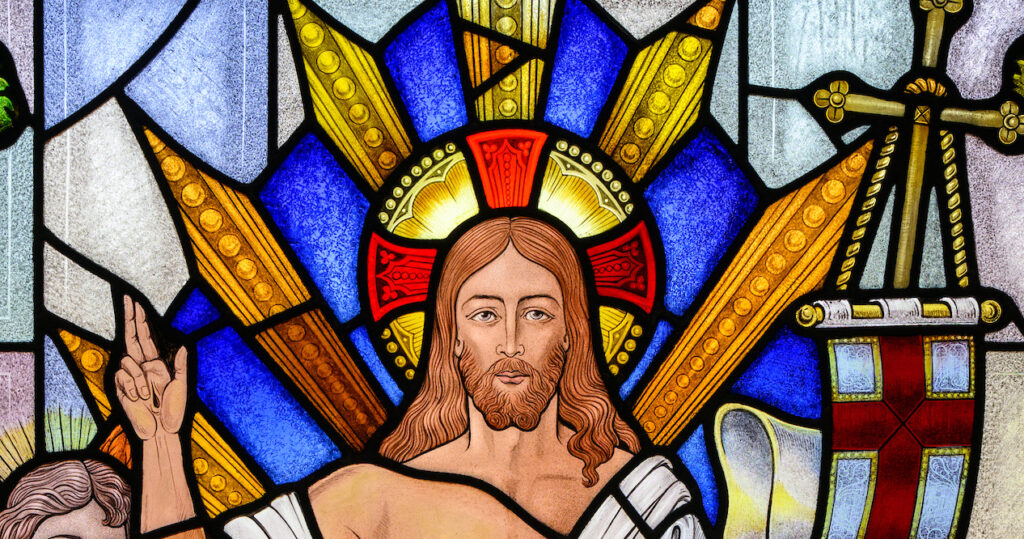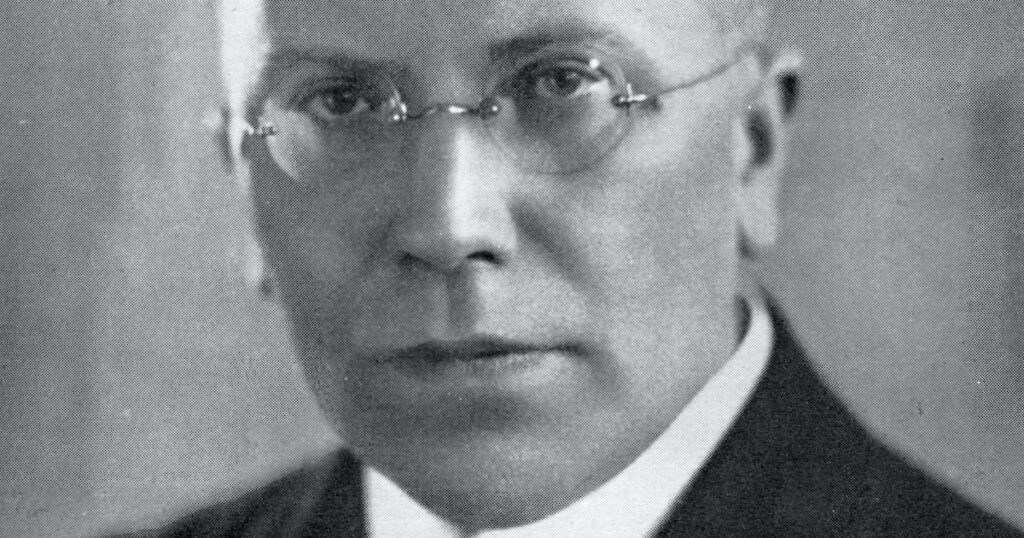In the following excerpt, the Rev. Hermann Sasse, a German Lutheran pastor and one of the great confessional Lutheran theologians of the 20th century, explains why faith and hope belong together: Both are bound to history. For the ancient Athenian and modern man alike, resurrection is merely an impossible, unreasonable miracle. But Christians believe God reveals Himself in history, from the Exodus to Christ’s resurrection. Our future-looking hope is built on this fulfillment of His promises.
—Pastor Matthew C. Harrison
This article is reprinted from Reformed Theological Review as found in The Journal Articles of Hermann Sasse (Irvine, CA: New Reformation Publications, 2016), 231–35.
The characteristic mark of hope is that it always looks into the future. Also faith and even love (1 Cor. 13:7) do that. Hope is in a certain way faith and love applied to the future (2 Tim. 4:8). The close connection between “faith’’ and “hope” becomes everywhere clear in the New Testament, so much that occasionally the words seem to be interchangeable. So we read 1 Peter 3:15, the admonition to “be prepared to make a defense to anyone who calls you to account for the hope that is in you” (comp. 1:21). Another example is the great chapter Hebrew[s] 11, which begins with the definition of faith that has become so important to all churches:
“Faith is the assurance (hypostasis, Lat. substantia) of things hoped for (elpizemenon), the conviction (‘elenchos) of things not seen.” This is followed by the enumeration of the great examples of faith from the beginning of the world, which, as faith only knows, was created by the Word of God “so that what is seen was made out of things which do not appear” (comp, the terms phainomena, blepomena with the juxtaposition of ‘visible’ and ‘invisible,’ ‘transient’ and ‘eternal’ in 2 Cor. 4:18). The long range of the samples of faith stretches from Abel, Henoch, and Noah to Abraham, Moses, and to the innumerable cloud of witnesses of all ages. The examples of “faith” are in each case also examples of hope. Faith and hope are always directed to things unseen, as also Paul emphasizes that hope means the firm expectation of something that is not yet seen (Rom. 4:18; 8:24). In Paul as well as in the Epistle to the Hebrews, it becomes evident that the last aim of all Christian hope is the eschatological future promised in the Word of God, in the Gospel of Christ (Col. 1:5 AND 23). As far we hope for this future, God is our hope, and Christ is our hope.
Both hope and faith have to do with the past and the future, though faith in a special way with the first, and hope most certainly primarily with the latter. This explains why they belong together. The future of yesterday is the past of tomorrow. This is the reason why faith and hope belong to the very nature of the biblical and Christian religion. In contrast with all other religions that we know (excepting Islam, which has its origin in Jewish-Christian sects), the Bible and Christianity claim that not nature (as the pantheistic religions of all times think), and not the human soul (as the mystic religions of all ages assume), but rather history is the realm of divine revelation. Both faith and hope are bound to history to the assertion that certain historic events have occurred in our world. Abraham migrated from Harran to the land in which his descendants were to live, on the basis of a divine call. The covenant between God and Abraham is an historic fact. The same is true of the Exodus under the leadership of Moses, the covenant between God and Israel, and all the other essential facts of the history of salvation. They are the presupposition of the history of the New Testament, which began with the incarnation of the Son of God who is the Christ, the Messiah whose appearance was promised in the Old Testament. The biographical facts of the life of Jesus from the incarnation to the resurrection and ascension, which the Church confesses in its creeds as articles of faith, are historic events. They must be believed as such, whatever can and must be said about the literary form of the sacred historiography of the Bible. It is a most significant fact that this history is given in the form of various traditions. Every great event in the history of salvation in the Old and the New Testament is related twice (comp. the relation of the history of the patriarchs in the various books of the Old Testament and in the Greek Bible, which Stephen uses in his great discourse Acts 7). Also in the New Testament, this “law of parallels” is valid. Three times we read in Acts the story of the conversion of Paul, and each time with small variations of which the author was, of course, aware. At the climax of the sacred history, we have the four strands of the Gospel. Whatever this may mean for the interpretation of the biblical writings, the sacred history of Israel, of Jesus and the Church of the New Testament remains one indivisible unit. Its dogmatic content must be believed. This means that Christian faith as well as Christian hope can never exist without the recognition of historical facts. If the migration of Abraham is a mere saga, if the exodus has not taken place, then the whole faith of the Old Testament collapses. If the saving events of the New Testament are legends, then the entire Christian faith breaks down, as St. Paul has rightly seen: “If Christ has not been raised, then our preaching is in vain. We are even found as false witnesses who testify against God that he raised Christ whom he did not raise. … If Christ has not been raised, your faith is futile and you are still in your sins.” It must be understood that no one in the ancient world, neither Christians nor non-Christians have ever been able to understand this message of the resurrection of Christ as not including the empty grave.
If this is so, then we understand the difficulties the kerygma of the Church presented to the world. When Paul preached to the people of Athens, they listened until he said that “God commands all men everywhere to repent, because he has fixed a day in which he will judge the world in righteousness by a man whom he has appointed, and of this he has given assurance to all men by raising him from the dead” (Acts 17:30F.). This is exactly the point where the modern man voices his loud protest. Those people were prepared to listen to him when he seemed to be “a preacher of foreign divinities—for he had preached Jesus and the anastasis” (v. 18). They would have raised no objection against a new couple of those divinities in whose myth and ritual the eternal truth of rebirth was symbolically proclaimed in the story of the death and resurrection of a God, such as Artis and Cybele, Osiris and Isis. But to speak of repentance and judgment is offending the dignity of every Athenian in the world. And on top of that to speak of a man as judge and of the resurrection of a real man from the dead must seem to Greeks to be such hair-raising nonsense that their patience was exhausted. “When they heard of the resurrection of the dead,” they said what amounts to a courteous or less courteous “Never again.” The sacred history of salvation is unacceptable not only because it contains miracles that seem to our reason to be unbelievable, but because it is history. …
Wherever the historic character of the Christian revelation is rejected or the historicity of the great saving events of the sacred history is denied, there the Christian faith collapses. The inevitable consequence is that the Christian hope also fades away.

Photo Credit: LCMS Communications/Erik M. Lunsford





